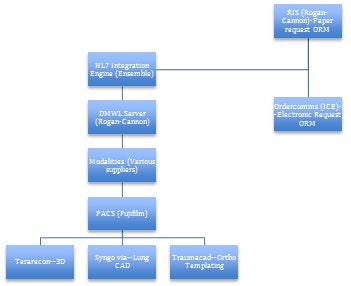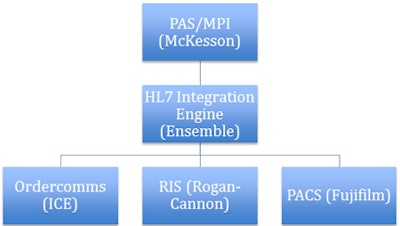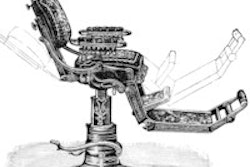
Building relationships with your providers is an essential aspect of replacing a PACS. In our case, we started our project planning as soon as contracts were signed with our suppliers. Our project team consisted of hospital project team members, the radiology information system team (Rogan-Delft and Canon) and the PACS group (Fujifilm Medical Systems). Acuo Technologies was subcontracted by Fujifilm to deliver data migration and also the cross-enterprise document sharing (XDS)-based enterprise vendor-neutral archive (VNA) system. Hence, they too were part of our tea
 Dr. Neelam Dugar is a consultant radiologist at Doncaster Royal Infirmary, U.K., and former chair of the Royal College of Radiologists' Imaging Informatics Group.
Dr. Neelam Dugar is a consultant radiologist at Doncaster Royal Infirmary, U.K., and former chair of the Royal College of Radiologists' Imaging Informatics Group.
We had project team meetings every two weeks, and they were well attended. From the hospital side, the following people attended: PACS manager (also project manager), clinical lead (myself), IT networks manager, IT integration expert on HL7, IT/PACS training lead, IT business manager, and radiology business manager (who also chaired the meeting). Also at the meetings were Fujifilm's project manager and its engineer and application specialist, Acuo's project manager, and Rogan and Canon's project manager and chief developer.
On an ad-hoc basis, other people were also invited to the meetings. These meetings were important for building good relationships between hospital staff and suppliers and also between the suppliers themselves.
For the data migration, our PACS manager coordinated the discussions between Agfa/Accenture (our previous PACS supplier) and the Fujifilm/Acuo Technology engineers. Good support and professionalism from the outgoing PACS supplier are important for smooth data migration. We were fortunate to have clean DICOM data because we always used the DICOM Modality Work List (DMWL) when storing image data into the Agfa PACS. Standard DICOM query-retrieve was used as the methodology to transfer the DICOM data from Agfa PACS to Fujifilm PACS.
The migration process went fairly smoothly, with only a few stops and starts. Agfa provided the necessary help when there were any hurdles encountered by the Acuo/Fujifilm migration team. As the customer, we were required to test the quality of migrated images to ensure that the image quality was not compromised, and also to check that the DICOM tags were correct. One of our senior radiographers was given the task of validating the quality of the migrated DICOM data.
Apart from the image data validation exercise and coordinating discussion between Fujifilm and Agfa, as the customer, we had little to do with the migration process. This task was handled by the Acuo and Fujifilm engineers. However, the project team members were constantly kept up-to-date with the progress of the migration activity, as this would dictate our ability to go live. We successfully migrated across almost seven years of data, which composed of approximately three million studies conducted between November 2006 and August 2013. Data migration was complete before the go-live date at the end of August 2013.
One of the first tasks we undertook as a project team was to create a simple overview diagram of integration between systems in the future. The Rogan team kindly took the lead on this with a very smart and clear diagram. Below is my own simplistic overview of the integration between systems using HL7 and DICOM standards.
In the next article in this series, I will discuss integration and standards used for integrating systems. I will also be discussing the diagrams below in detail in the next part of my series on PACS Replacement.
 HL7 ORM Messages, DICOM Modality Worklist, and DICOM Send
HL7 ORM Messages, DICOM Modality Worklist, and DICOM Send
 HL7 ADT Messages.
HL7 ADT Messages.Dr. Neelam Dugar is consultant radiologist at Doncaster Royal Infirmary, U.K., and former chair of the Royal College of Radiologists' Imaging Informatics Group.
The comments and observations expressed herein do not necessarily reflect the opinions of AuntMinnieEurope.com, nor should they be construed as an endorsement or admonishment of any particular vendor, analyst, industry consultant, or consulting group.



















